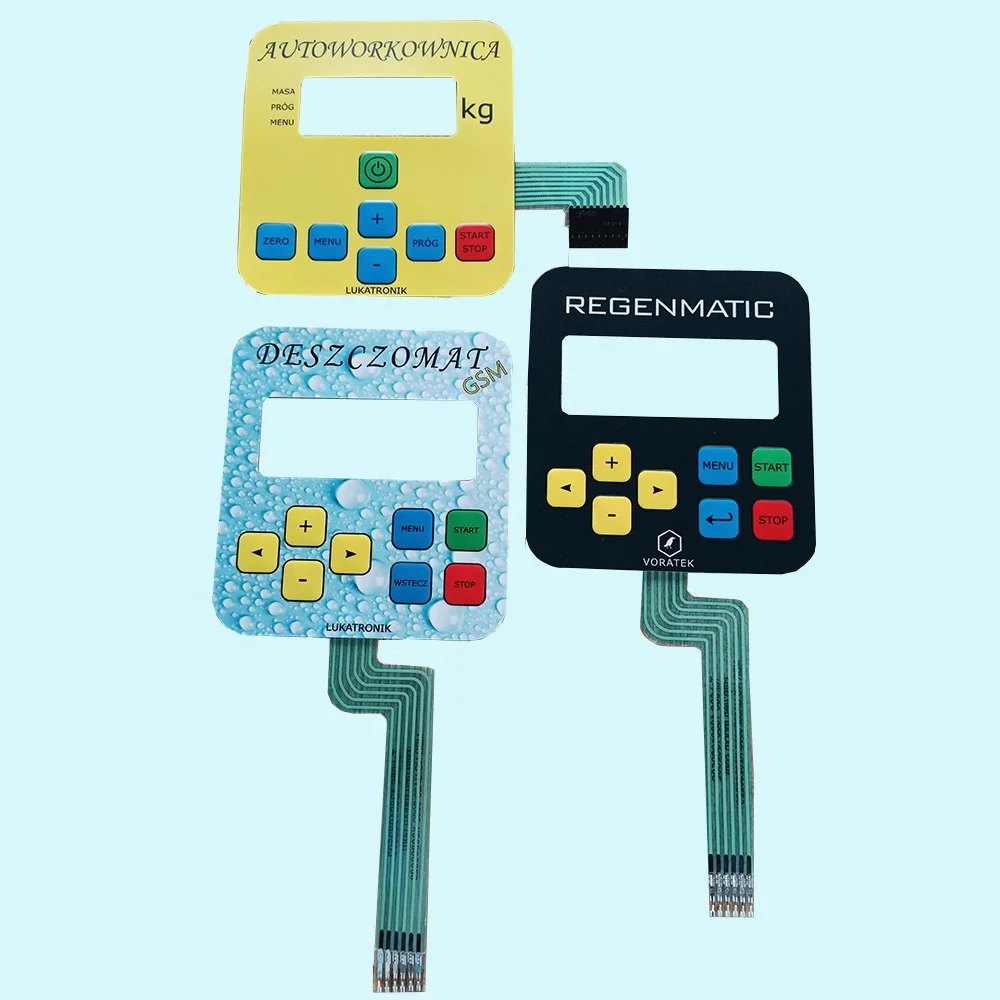Membrane Switch: Reliable, Cost-Effective, and User-Friendly Control Systems
Membrane Switch: Reliable, Cost-Effective, and User-Friendly Control Systems
Blog Article
Recognizing Membrane Changes: The Trick to Reliable and sturdy Controls

What Are Membrane Layer Switches?
Membrane buttons are an innovative service in the realm of individual interface innovation, integrating performance and style flawlessly. These tools offer as an interface in between individuals and digital systems, incorporating numerous components into a small format. Generally constructed from adaptable, thin layers of materials, membrane layer buttons are created to reply to touch, allowing users to engage with machinery and digital devices effectively.
The main aspects of a membrane button include a published circuit layer, graphic overlay, and a spacer layer that avoids unintended activation. The visuals overlay can be customized to show brand identification or customer preferences, boosting aesthetic appeals while making certain functionality. Membrane buttons are commonly utilized in different applications, consisting of medical tools, customer electronics, and commercial equipment, owing to their resilience and resistance to ecological variables such as wetness and dirt.
One of the key benefits of membrane buttons is their ability to endure deterioration, making them suitable for high-traffic atmospheres. Furthermore, they are lightweight and call for very little room, allowing for ingenious designs in product advancement. In general, membrane changes represent a reliable and useful option for modern digital interfaces, weding modern technology with user-centric layout concepts.
How Membrane Layer Switches Job
The procedure of membrane switches hinges on an easy yet reliable device that translates user input into digital signals. When a customer presses the switch, the leading layer deforms, enabling a conductive element in the circuit layer to make call with an equivalent conductive pad on the bottom of the visuals overlay.
The style of membrane layer buttons can vary, but they often include domes or tactile components to supply feedback to the individual, improving the total experience - membrane switch. The products used in membrane layer switches, such as polyester or polycarbonate, add to their longevity and resistance to environmental elements, consisting of dampness and dust. In addition, the published circuits are generally enveloped, which shields them from wear and tear over time.
Advantages of Membrane Buttons
Furthermore, membrane layer buttons are recognized for their longevity. Created from robust materials, they are resistant to dirt, dampness, and physical wear, which significantly extends their life-span contrasted to conventional mechanical buttons. This durability makes them particularly ideal for high-traffic settings and applications requiring long life.
Another significant advantage is the convenience of cleaning and upkeep. The smooth surface of membrane layer switches minimizes dirt accumulation and is commonly unsusceptible spills, making them excellent for settings that call for frequent sanitization.
Additionally, membrane buttons supply a streamlined profile, resulting in a thinner design that can be incorporated into different tools without adding mass. This function not just boosts the visual allure but likewise adds to a much more ergonomic item layout.
Applications of Membrane Layer Switches
Flexible and easy to use, membrane layer buttons find applications across a wide array of sectors, including medical tools, customer electronic devices, and commercial equipment. In the clinical field, these switches are integral to devices such as diagnostic look at more info tools, client surveillance systems, and mixture pumps, where reliability and convenience of cleaning are critical. Their ability to keep and withstand harsh environments performance makes them optimal for such applications.

In consumer electronics, membrane buttons are made use of in items like microwaves, washing devices, and remotes - membrane switch. Their sleek style permits intuitive user interfaces, enhancing the general individual experience while providing resilience and resistance to use and tear
Industrial tools additionally benefits from membrane switches, especially in control panels for equipment and automation systems. These switches provide security against dust and dampness, making certain constant performance in challenging settings. Moreover, their adjustable attributes permit producers to tailor them to specific operational requirements, boosting performance and performance.
Selecting the Right Membrane Switch Over
When picking a membrane switch, it is important to think about different aspects that affect efficiency and suitability for particular applications. The main considerations include ecological problems, responsive feedback, toughness, and layout requirements.
First, examine the operating setting; switches revealed to dampness, chemicals, or severe temperature levels call for specific materials to make sure longevity and performance. Next, assess the demand for responsive comments. Depending on customer communication, some applications may take advantage of a responsive action to verify activation, while others might favor a non-tactile style for visual reasons.
Resilience is another critical element; membrane layer buttons need to be made to hold up against regular use, impacts, and abrasion. Guarantee the picked button can endure the anticipated lifecycle, especially in high-usage circumstances.

Conclusion
In verdict, membrane layer changes offer as necessary elements in the style of sturdy and dependable control systems throughout various sectors. The adaptability of membrane switches enables for tailored options that fulfill particular functional demands, reinforcing their value in contemporary technology.
Membrane layer switches over stand for an important facet of modern-day user interface style, mixing functionality with strength in different applications.Membrane layer buttons are a sophisticated service in the world of customer interface modern technology, combining capability and layout seamlessly. Commonly constructed from adaptable, thin layers of products, membrane layer buttons are designed to respond to touch, enabling users to engage with machinery and digital tools efficiently.
The design of membrane layer switches can vary, however they commonly integrate i loved this domes or tactile elements to redirected here provide comments to the customer, enhancing the overall experience.In final thought, membrane switches offer as important components in the layout of dependable and sturdy control systems throughout various industries.
Report this page